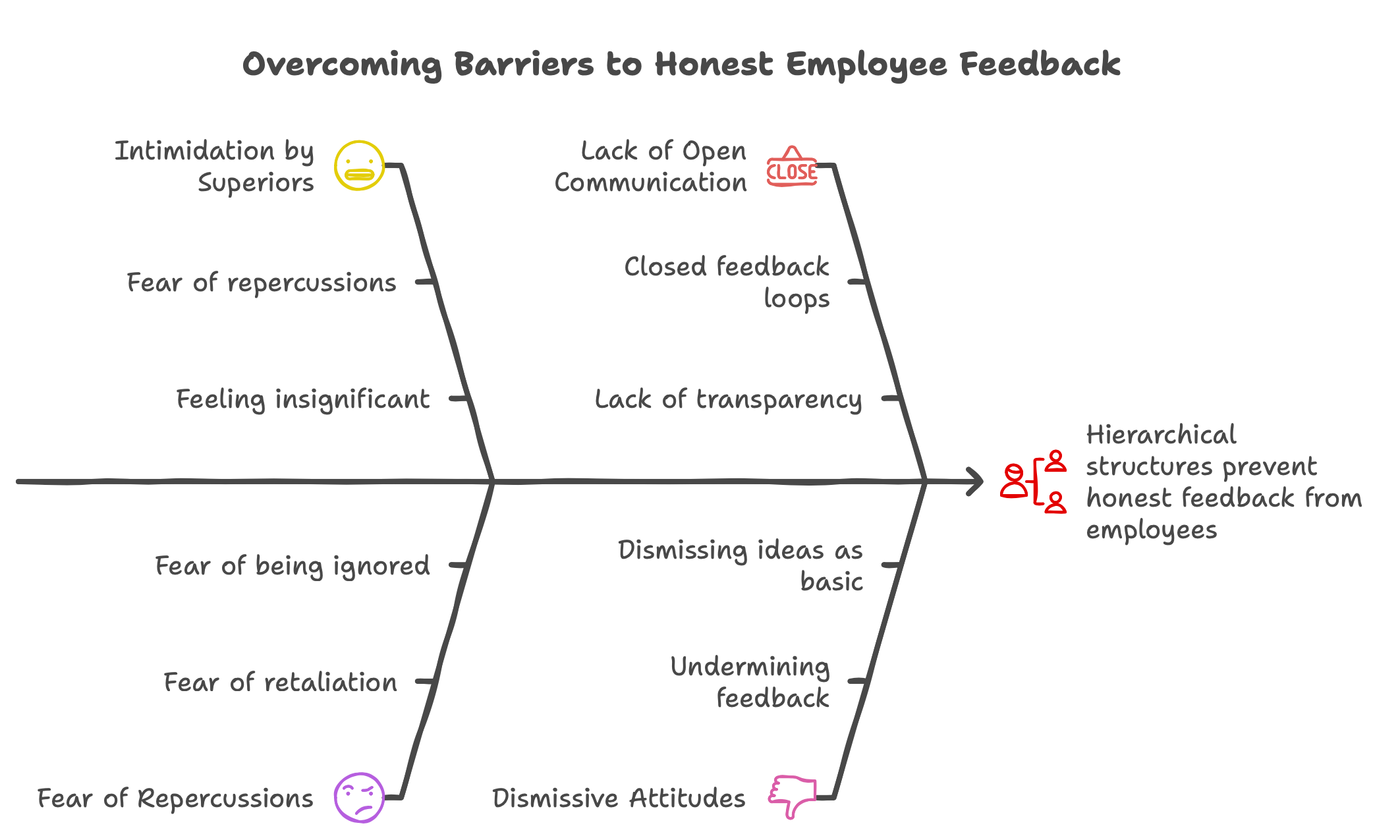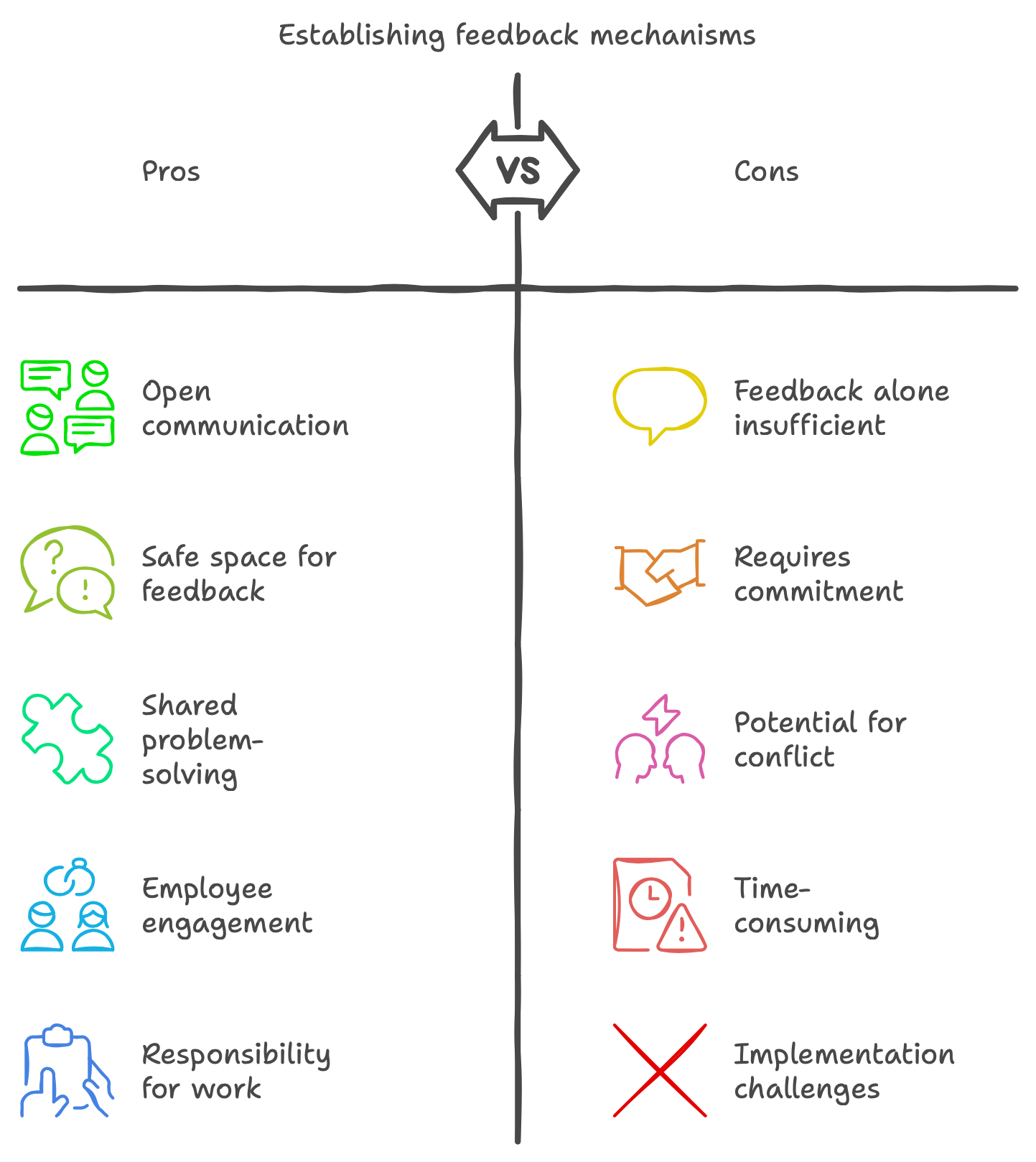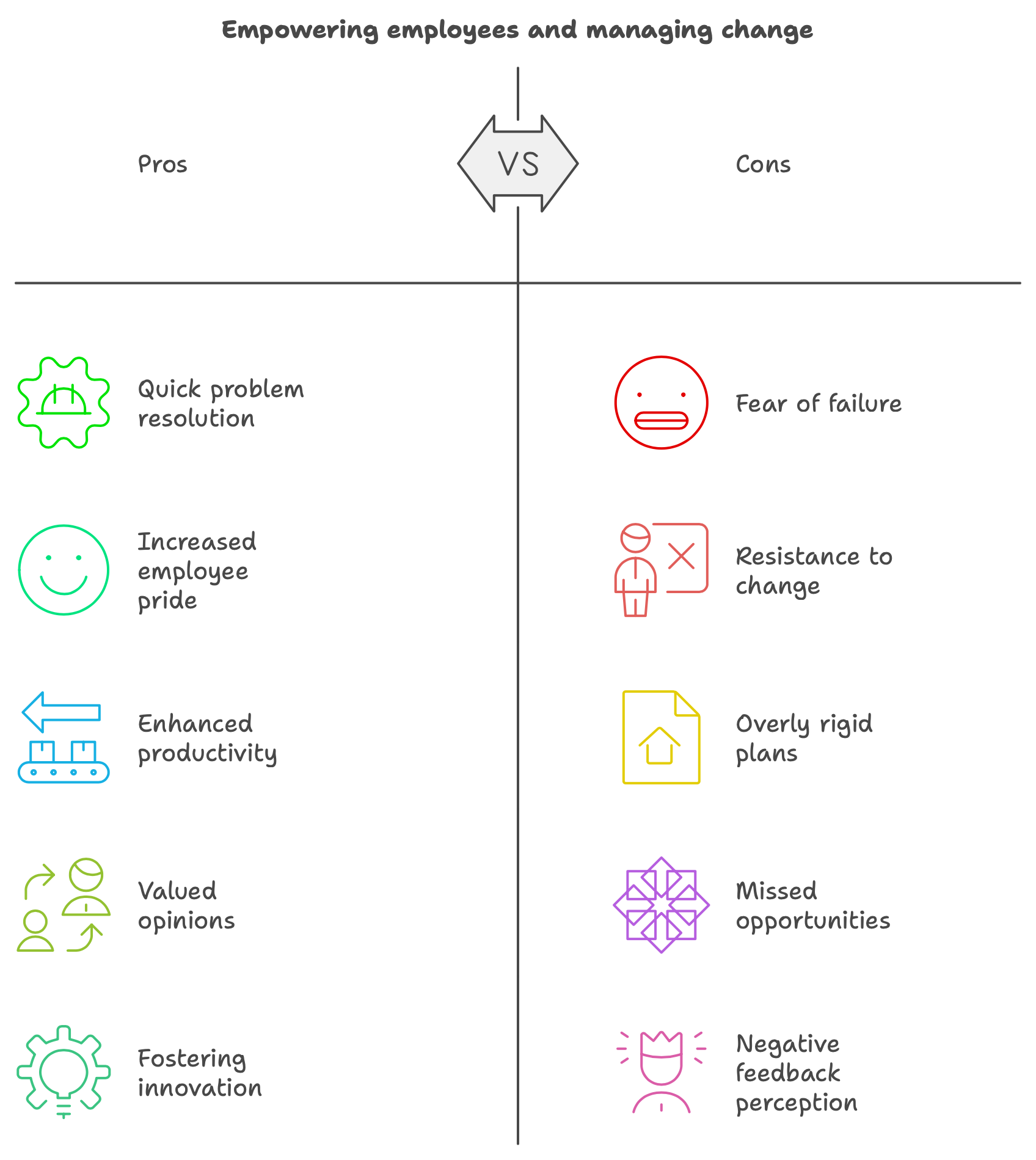How to Break Hierarchical Barriers and Get Honest Feedback from Your Team
Honest feedback from employees, especially when directed towards superiors, is often hindered by hierarchical structures.
It is unlikely that you would feel comfortable sharing your ideas for improving the business with your boss. This is a common experience for most individuals, who may feel intimidated or insignificant when communicating with higher-ups. Transformation to Cross-Functional Teams might be a way to go.
Another part of this story is that if you used to give an honest feedback and work openly your boss might not like your honesty and openness and will do everything to prevent you communicating to the top. Together with this article I recommend you to read: The Science of Talent Acquisition: How Structured Evaluation Predicts Success and Guide: HR’s Role in Team Management and Preventing Burnout
It is unlikely that you would feel comfortable sharing your ideas for improving the business with your boss. This is a common experience for most individuals, who may feel intimidated or insignificant when communicating with higher-ups. Transformation to Cross-Functional Teams might be a way to go.
Another part of this story is that if you used to give an honest feedback and work openly your boss might not like your honesty and openness and will do everything to prevent you communicating to the top. Together with this article I recommend you to read: The Science of Talent Acquisition: How Structured Evaluation Predicts Success and Guide: HR’s Role in Team Management and Preventing Burnout

Or just not listening to your ideas, saying that it is so basic, or something like that, basically washing out your wish to continue sharing your ideas and thoughts.
However, this fear of speaking up can have detrimental effects on the organization, as crucial issues may go unnoticed and unresolved.
What strategies can be employed to overcome this barrier?
One approach to address this challenge is to establish feedback mechanisms that enable open communication across different levels of hierarchy. For instance, you can set up a “Special Day”, during which all operations are paused and employees spent the day in teams providing feedback about the company. The Special day may be a valuable tool, as it created a safe space for staff members to engage in candid conversations about their experiences and challenges, resulting in shared problem-solving efforts.

However, simply receiving feedback is not enough. To obtain the most useful feedback from employees, leaders must ensure that their team members take responsibility for their work.
Letting Employees Take Charge and Staying Open to Change
An example of a simple yet effective method to enhance productivity was implemented by Japanese companies in the 1940s. Instead of limiting the power to stop factory assembly lines to senior managers, all workers were empowered to halt production by pulling a cord if they identified an issue. This approach instilled a sense of pride in employees as they took ownership of problem-solving rather than relying on management. Consequently, efficiency improved as problems were addressed quickly.
Furthermore, it is crucial for workers to feel that their opinions and suggestions are valued. However, they may withhold their feedback due to the belief that management will disregard them or respond negatively. To overcome this, you can personally meet with each employee to listen to their perspectives and concerns, fostering an environment in which employees feel comfortable expressing their ideas.
Furthermore, it is crucial for workers to feel that their opinions and suggestions are valued. However, they may withhold their feedback due to the belief that management will disregard them or respond negatively. To overcome this, you can personally meet with each employee to listen to their perspectives and concerns, fostering an environment in which employees feel comfortable expressing their ideas.

The fear of failure can lead individuals to prefer familiar paths rather than taking risks and making changes. If you do things in the way you used to do for a long time, is it possible to make innovation or improvement? It is unlikely in my point of view, but for large and established corporations it is ok, but for small and mid-size fast growing companies it is a way to loose the competition.
People tend to resist change due to the belief that novel and unfamiliar situations increase the likelihood of making mistakes. That's why we recommend to attract right people with right experience and this is the way we can help your business grow. Additionally, individuals fear being perceived as failures, leading to an aversion to making mistakes.
Furthermore, the fear of the unknown can result in efforts to control the future meticulously. In business, organizations may opt for a "safe route" by creating inflexible plans to cope with an unpredictable future.
However, excessive rigidity can cause companies to overlook unanticipated opportunities. This is way we suggest to keep an eye on the culture and even make hiring one of the top CEO's priorities.
How UnitiQ Helps Build Open Communication and a Culture of Accountability
HR services company UnitiQ can play a significant role in addressing the challenges mentioned above. Here are a few ways how they can help:
1. Establish feedback mechanisms: HR services company can help establish feedback mechanisms that enable open communication across different levels of hierarchy. They can design and facilitate special events or meetings to gather feedback and suggestions from employees. This can provide a safe and structured space for staff members to engage in candid conversations about their experiences and challenges, resulting in shared problem-solving efforts.
2. Implement performance management systems: UnitiQ can design and implement performance management systems that allow employees to take ownership of their work and are held accountable for their responsibilities. This approach can instill a sense of pride in employees as they take ownership of problem-solving rather than relying on management. Consequently, efficiency improves as problems are addressed quickly.
1. Establish feedback mechanisms: HR services company can help establish feedback mechanisms that enable open communication across different levels of hierarchy. They can design and facilitate special events or meetings to gather feedback and suggestions from employees. This can provide a safe and structured space for staff members to engage in candid conversations about their experiences and challenges, resulting in shared problem-solving efforts.
2. Implement performance management systems: UnitiQ can design and implement performance management systems that allow employees to take ownership of their work and are held accountable for their responsibilities. This approach can instill a sense of pride in employees as they take ownership of problem-solving rather than relying on management. Consequently, efficiency improves as problems are addressed quickly.

3. Offer training and development programs: HR services company UnitiQ can offer training and development programs that provide employees with the necessary skills to overcome their fear of failure and the unknown. They can provide training on effective communication, teamwork, and problem-solving techniques that help employees become more comfortable expressing their ideas.
4. Provide employee engagement and recognition programs: HR services company can design and implement employee engagement and recognition programs that foster an environment in which employees feel valued and appreciated. This approach can help build a culture of openness, trust, and respect that encourages employees to share their ideas and perspectives without fear of negative consequences.
Overall, UnitiQ can help organizations create a culture of open communication and collaboration that encourages employees to share their feedback, ideas, and concerns. This can lead to improved efficiency, productivity, and employee satisfaction, ultimately contributing to the success of the organization.
We also recommend you to read:
Striking the Balance: Exploring Organizational Structures for Success
Transformative Potential of Hybrid Organizational Structures
Mastering Situational Leadership: How to Drive Results Without Burnout
Scaling Smart: How UnitiQ Helps In-House HR Teams Overcome Key Challenges
UnitiQ: Empowering Businesses Through Fractional HR Expertise
UnitiQ provides flexible, on-demand HR services that help businesses navigate complex challenges, particularly in talent acquisition, HR operations, and strategic people management. With access to a pool of seasoned HR professionals,
UnitiQ allows companies to bring in expert support exactly when needed, without the overhead of a full-time HR team. This approach is perfect for companies of any size, enabling them to grow their teams with professionals who align with their values and goals, all while maintaining agility and cost efficiency.
UnitiQ allows companies to bring in expert support exactly when needed, without the overhead of a full-time HR team. This approach is perfect for companies of any size, enabling them to grow their teams with professionals who align with their values and goals, all while maintaining agility and cost efficiency.
Whether it's implementing performance management systems, enhancing employee engagement, or fostering open communication across hierarchies, UnitiQ’s services are designed to boost productivity, accountability, and workplace culture.
By offering HR solutions tailored to each business’s specific needs, UnitiQ ensures organizations can evolve smoothly while staying focused on what they do best.
Contact me, Olga Fedoseeva, Fonder at UnitiQ, directly:
My Telegram
My LinkedIn
By offering HR solutions tailored to each business’s specific needs, UnitiQ ensures organizations can evolve smoothly while staying focused on what they do best.
Contact me, Olga Fedoseeva, Fonder at UnitiQ, directly:
My Telegram
My LinkedIn








